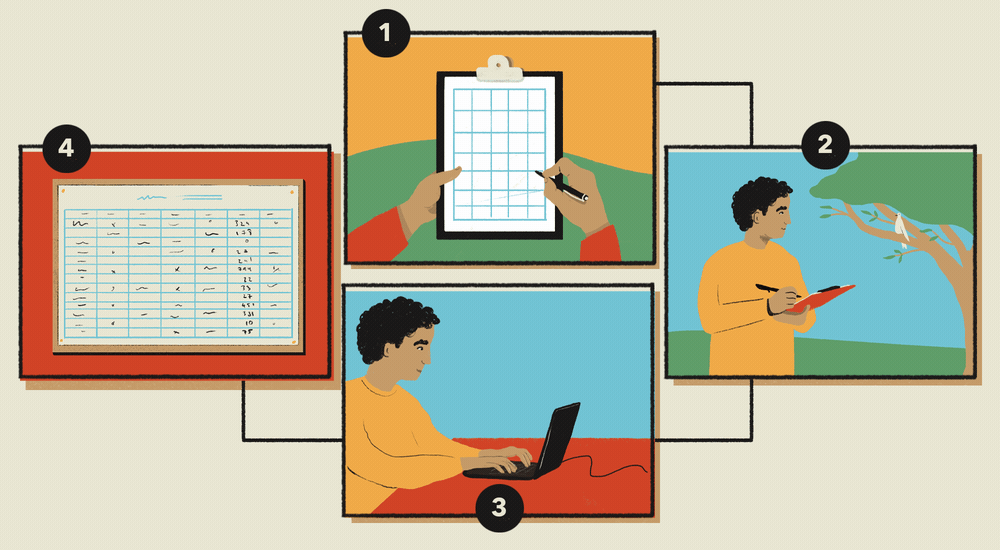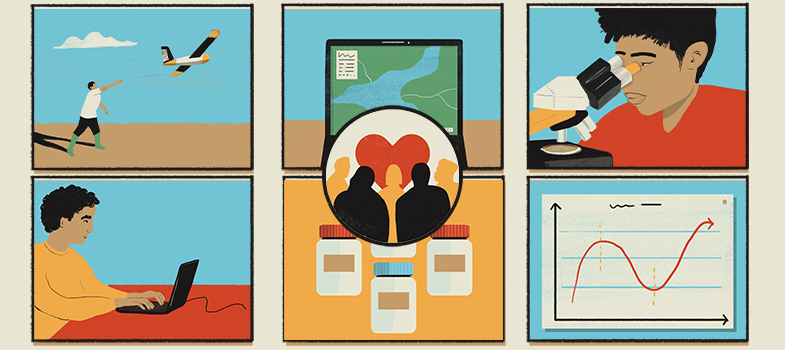What you can use to collect environmental data
1. Observation and recording through pen and paper
Regularly observing environmental change at a location and recording any changes with pen and paper is a useful technique for gathering information. For example, you can observe and understand changes in the environment by collecting information on the presence or absence of wildlife species, on changes in habitat or land use area, the presence or absence of solid waste pollution, changes in water colour indicating pollution in a river or recording changes in water levels that help you understand flooding or droughts.
A good idea with this technique is to develop a recording sheet so you collect the same type of data each time you carry out an observation. The data collected using a pen and the paper recording sheet can then be entered into a computer software package, such as Microsoft Excel, and analysed to produce tables or graphs showing any changes over time.
Steps to follow:
- Create a recording sheet
- Observe and record on the recording sheet
- Enter the recorded data into appropriate computer software
- View the results and produce a graph or table of data

